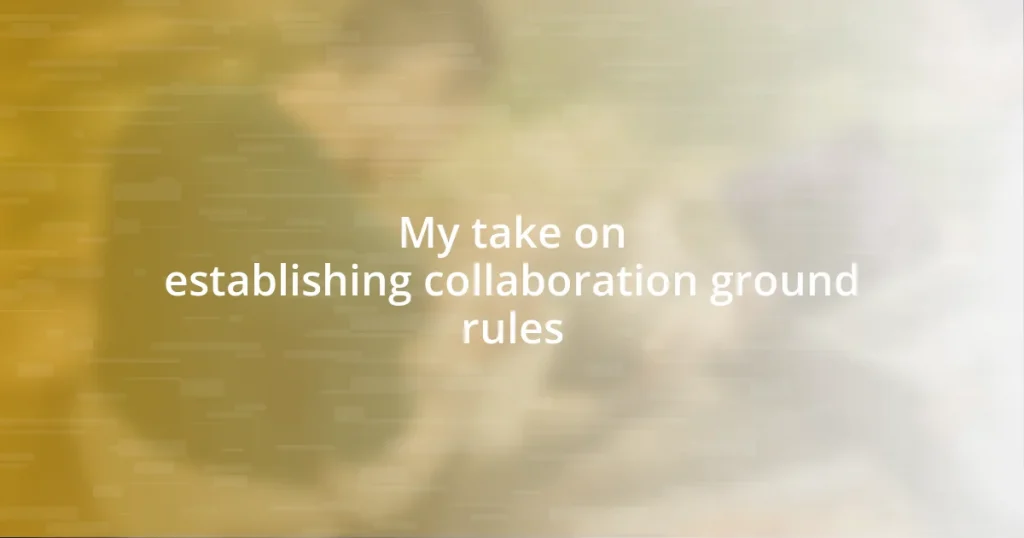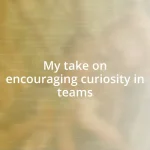Key takeaways:
- Establishing clear collaboration ground rules enhances accountability, clarity, and communication, fostering a productive team environment.
- Involving key stakeholders, including end-users and team members, ensures valuable insights are incorporated early, leading to better project outcomes.
- Regularly reviewing and updating collaboration rules keeps the team engaged and adaptable, allowing for innovation and improved morale over time.
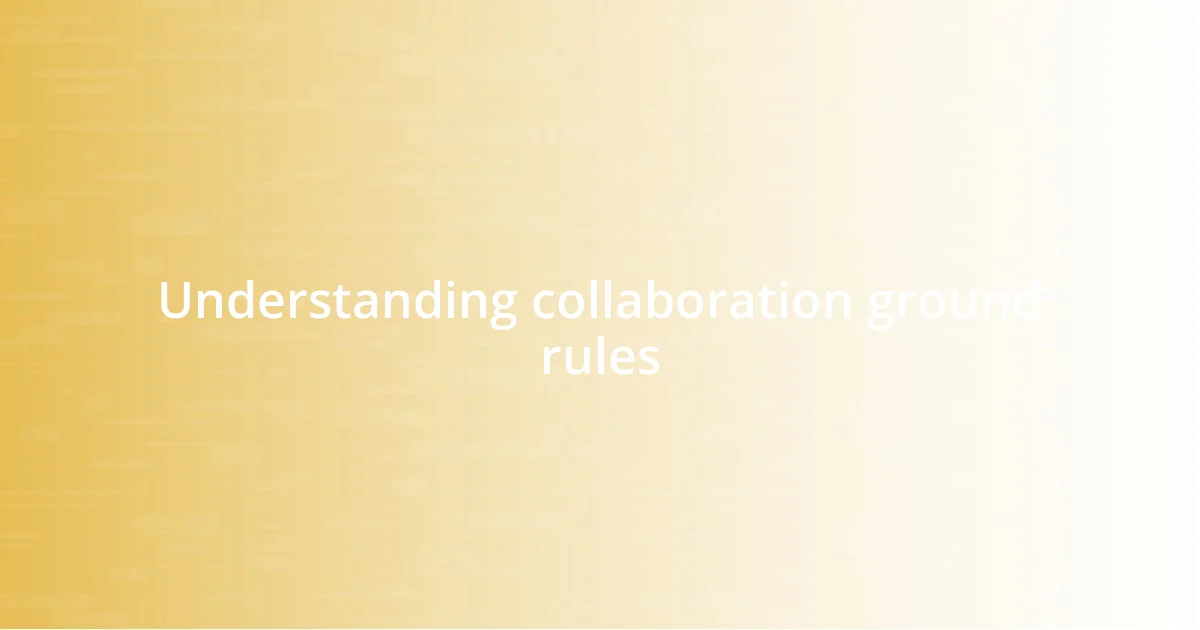
Understanding collaboration ground rules
Understanding collaboration ground rules is essential for creating a productive environment. When I first participated in a group project, our team struggled due to differing expectations. We quickly learned that taking the time to establish a few simple but clear ground rules, like communication etiquette and decision-making processes, made a significant difference in our collaboration.
Have you ever been part of a team that seemed to go in circles? I have. I remember a project where we frequently missed deadlines because no one was sure who was responsible for what. By setting ground rules that outlined our roles and responsibilities, we not only enhanced accountability but also fostered a sense of ownership among team members. This experience taught me just how powerful clarity can be in collaboration.
Another thing I’ve observed is how emotional intelligence plays into these rules. When team members feel respected and heard, it leads to more effective communication and smoother collaboration. I often ask myself: How can we create an atmosphere where everyone feels comfortable voicing their opinions? Establishing rules that prioritize respect and open dialogue can be a great starting point.
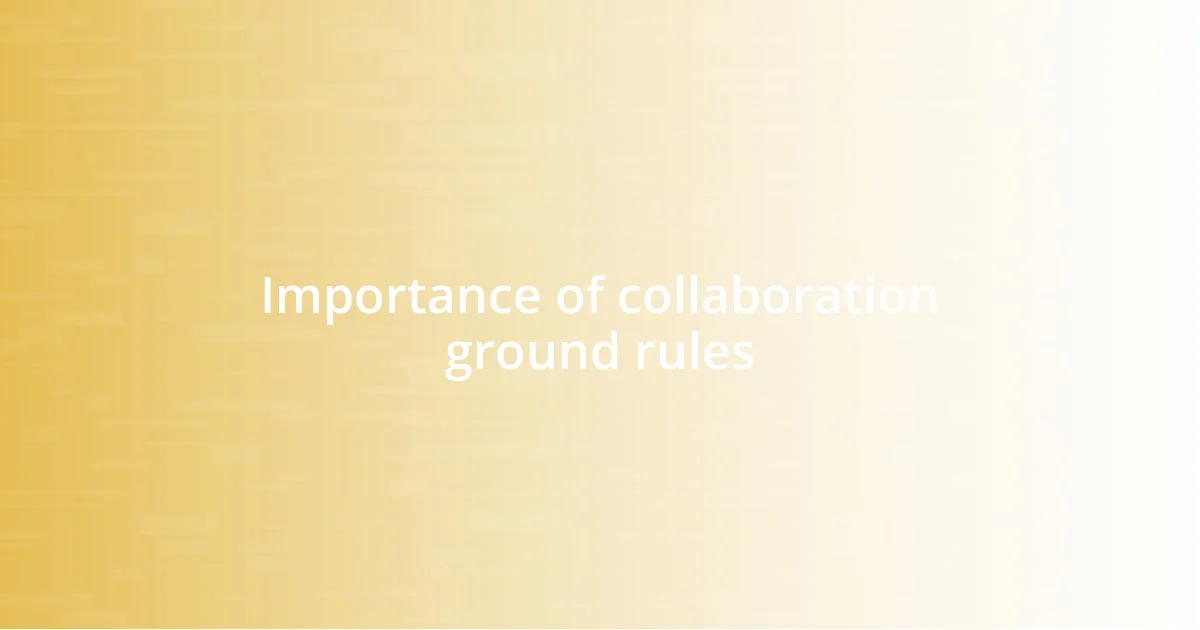
Importance of collaboration ground rules
Ground rules are not just formalities; they’re the bedrock of effective collaboration. I remember a time when a disagreement over project priorities spiraled into tension among teammates. It made me realize that having shared ground rules—like how we handle conflicts and make decisions—could have prevented that frustration. Establishing these guidelines not only limits confusion but also builds trust, which is crucial for nurturing a sense of community within the team.
Consider these key points when reflecting on the importance of collaboration ground rules:
- Clarity: Clear rules help everyone understand their roles and responsibilities, reducing ambiguity.
- Enhanced Communication: Ground rules encourage open dialogue, leading to better idea sharing and innovation.
- Conflict Resolution: Having established guidelines allows teams to address disagreements constructively.
- Inclusivity: Rules that foster respect make it easier for all voices to be heard, enhancing team morale.
- Accountability: When everyone knows what’s expected, it’s easier to hold each other accountable, driving performance and commitment.
In my experience, when teams embrace these principles, they create a dynamic environment where collaboration thrives, and productivity soars.
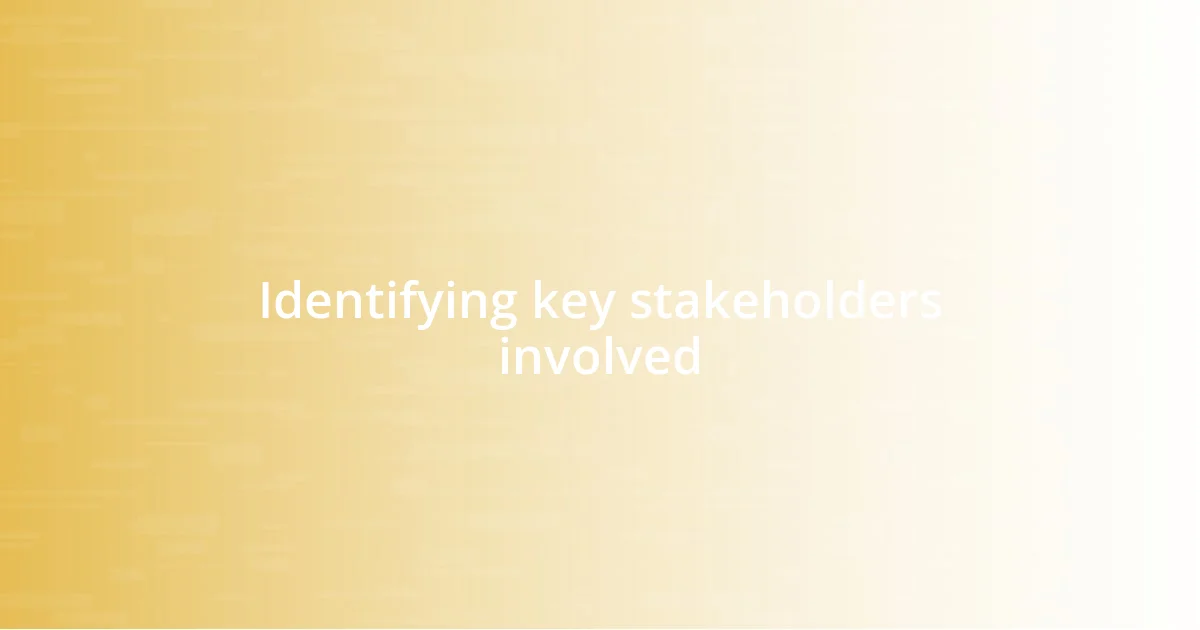
Identifying key stakeholders involved
Identifying key stakeholders is crucial for effective collaboration. In my experience, recognizing who has a vested interest in the project can significantly impact the outcome. For instance, during a recent software development project, I realized that including our end-users as stakeholders allowed us to gather valuable feedback early on. It changed our direction and ultimately led to a product that better met their needs.
Stakeholders can vary greatly, from team members to external partners. I once worked on a marketing campaign where we overlooked the opinions of our sales team, thinking we had it all figured out. It turned out they had insights that could have shaped our strategy significantly, saving us time and remedies down the road. I now make it a priority to ensure all relevant voices are heard.
It’s not just about identifying stakeholders; it’s also about understanding their interests and motivations. I remember engaging with a client who was initially skeptical about our project. By taking the time to understand their concerns and aligning our objectives, we turned that skepticism into enthusiasm. This experience reaffirmed for me that collaboration flourishes when we actively involve those who are impacted.
| Stakeholder Type | Importance |
|---|---|
| Internal Team Members | They understand the project details and collaboration needs directly. |
| External Partners | They can provide additional resources and different perspectives. |
| End-Users | Essential for ensuring the project meets real-world needs. |
| Clients | Their approval is critical for the project’s success. |
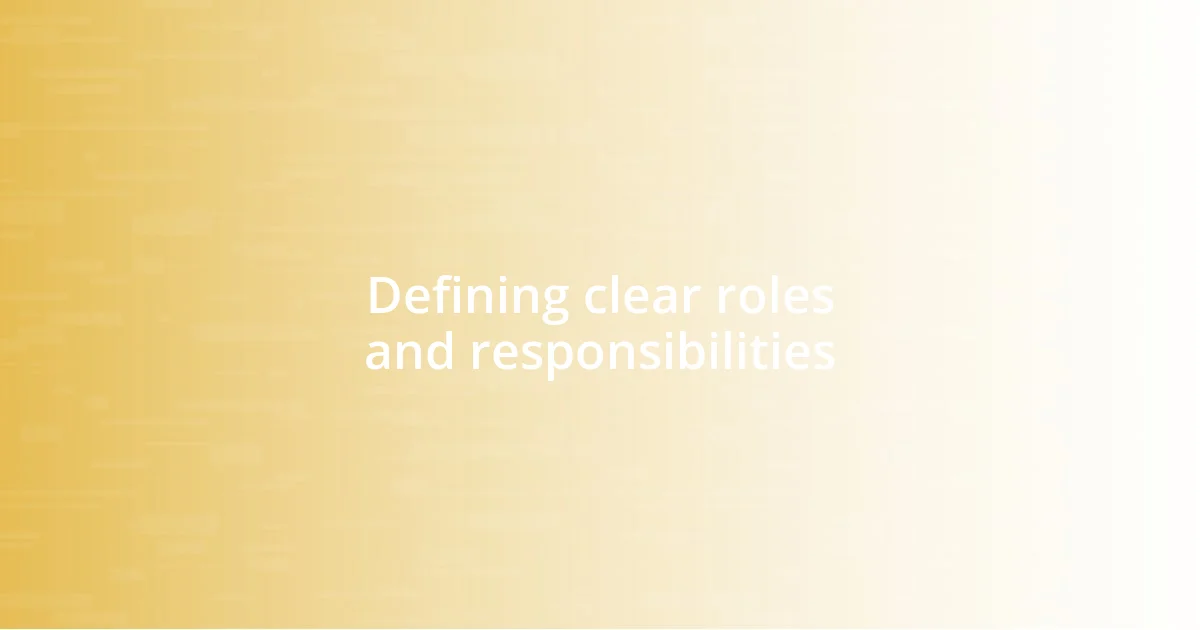
Defining clear roles and responsibilities
Defining roles and responsibilities is the backbone of any collaboration. I’ve seen firsthand how clarity in these areas can transform a project. In one team, we took the time to map out each member’s role before diving in; it was eye-opening. Everyone understood who was responsible for what, allowing us to work more efficiently and with less friction.
Sometimes, it surprises me how easily misunderstandings can creep in when roles aren’t clearly established. I recall a project where I assumed someone else was in charge of client communication, only to realize later that I had dropped the ball. This experience taught me the importance of explicitly outlining responsibilities from the get-go. It’s not just about assigning tasks; it’s about ensuring everyone feels empowered and accountable.
A well-defined role can also elevate team morale. I remember supporting a colleague who was struggling because he felt his contributions weren’t valued. Once we clarified his responsibilities and recognized his expertise in a specific area, his confidence soared. Isn’t it remarkable how a little clarity can work wonders? Making sure everyone knows their contributions matter fosters a collaborative spirit that I cherish in any working environment.
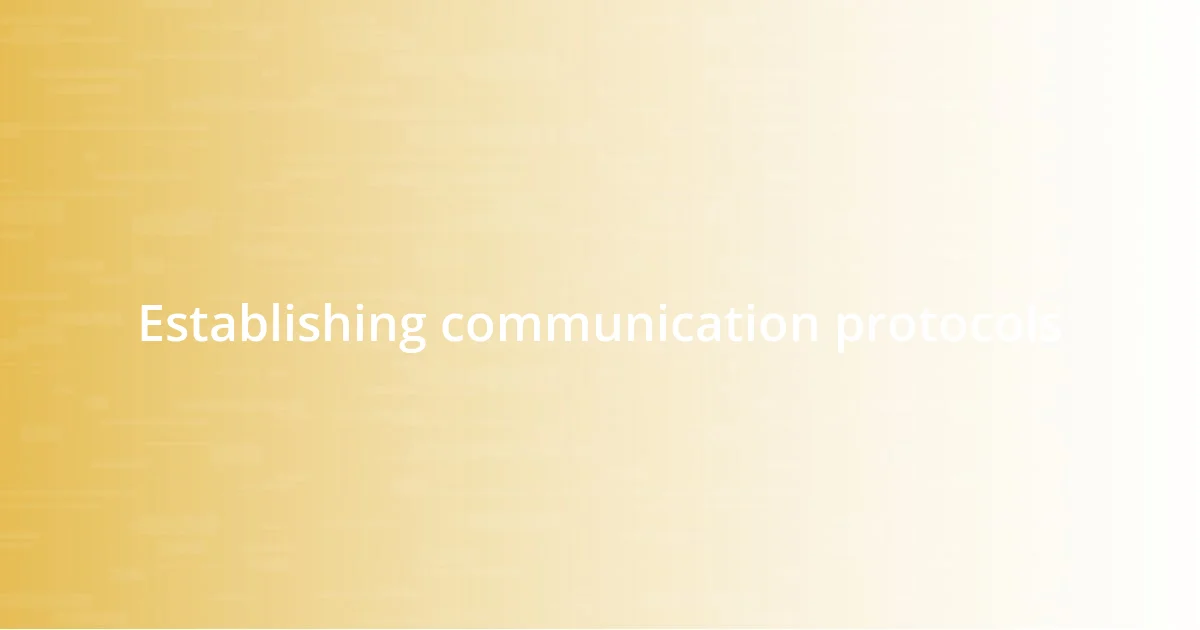
Establishing communication protocols
Establishing communication protocols is a fundamental step in ensuring collaboration runs smoothly. I remember a project where we overlooked this aspect, thinking we could just “wing it.” What a mistake that was! The lack of structured communication led to confusion about deadlines and expectations. Eventually, we had to scramble to fix misunderstandings that could have been prevented with clear protocols in place.
In my experience, creating defined touchpoints—such as weekly check-ins or daily updates—can significantly enhance transparency within a team. I once led a remote team that thrived on a shared online platform where we updated our progress regularly. This simple practice not only kept everyone in the loop but also fostered a sense of connection. Have you ever felt the difference it makes to know where everyone stands? I certainly did.
Another essential aspect is determining the preferred communication channels for different conversations. Some matters are best handled face-to-face, while others suit quick emails or instant messages. I once had a colleague who preferred messages over calls, and respecting that preference improved our collaboration immensely. Tailoring communication methods to fit the team’s dynamics encourages openness, which I consider vital for nurturing trust and engagement.
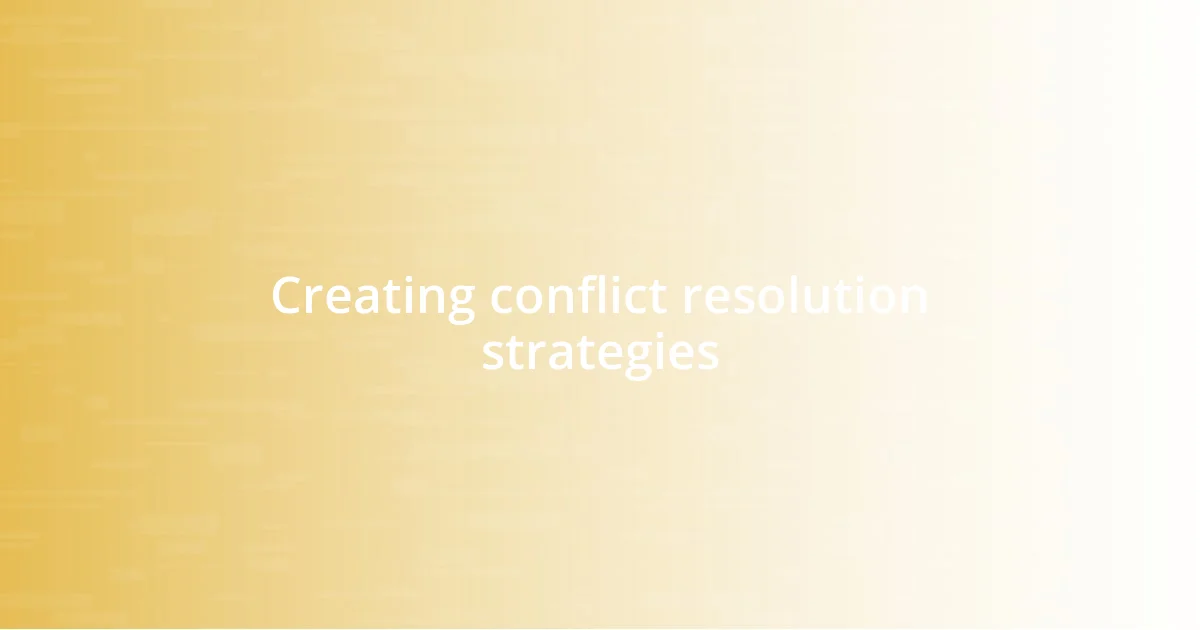
Creating conflict resolution strategies
When it comes to creating conflict resolution strategies, I believe proactive discussions are invaluable. For instance, during a brainstorming session on a challenging project, we decided to outline potential conflict scenarios openly. This approach allowed everyone to share their concerns and perspectives right off the bat. It was incredible to see how discussing issues beforehand not only minimized tension but also equipped us with a plan for moving forward. Don’t you find it comforting to have a roadmap for handling disagreements?
Another effective tactic I’ve employed is the concept of active listening. I recall a time when two teammates were at odds over differing opinions on project direction. By facilitating a space where each person could express their thoughts—while the other listened without interrupting—we unearthed underlying issues that had nothing to do with the project itself. This not only resolved the immediate conflict but also built a deeper understanding between the two. Isn’t it fascinating how listening can often be the first step toward reconciliation?
Lastly, I think it’s vital to institutionalize the idea that disagreements can be constructive. I remember a tension-filled team meeting where emotions were running high, but instead of avoiding the topic, we leaned into the discomfort. By reframing the discussion as a chance to grow and innovate, we tackled those tough points head-on. Can you imagine how liberating it felt to shift from resisting conflict to embracing it as an opportunity for collaboration? That experience has shaped my perspective on conflict resolution and taught me the power of a positive mindset.
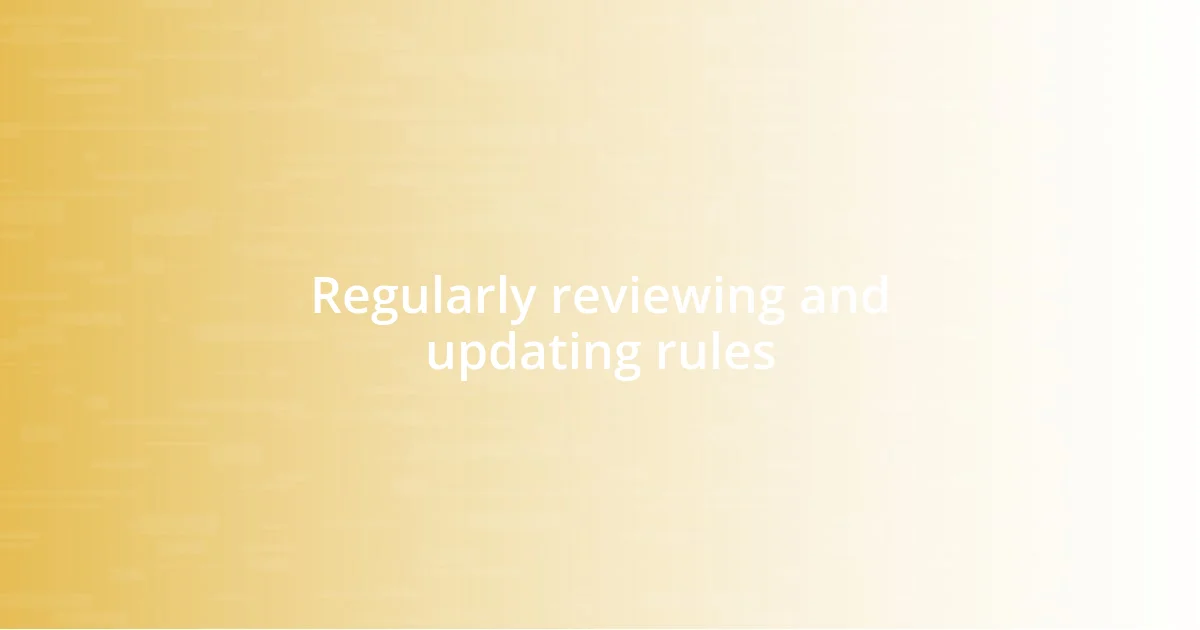
Regularly reviewing and updating rules
Regularly reviewing and updating collaboration rules is crucial for maintaining a healthy team dynamic. I’ve found that doing this not only keeps everyone engaged but also refreshes the group’s commitment to the established guidelines. For instance, in one project where we revisited our rules every quarter, we were able to adapt to changes in team structure and workload, which ultimately improved our productivity. Have you ever felt the difference that comes from just a few simple tweaks to ensure everyone is still on the same page?
I distinctly remember one time when our team realized that our initial rules about feedback had become outdated. Some members felt overwhelmed by the volume of critiques, while others were unresponsive when it mattered most. So, we organized a dedicated session to reassess and ignite meaningful dialogue around feedback. This not only clarified expectations but also reinforced a culture where everyone felt valued and heard. Isn’t it amazing how a little check-in can lead to such significant shifts in team morale?
Furthermore, I think the act of reviewing rules can spark new ideas and innovation within the team. I led a brainstorming workshop focused entirely on recalibrating our collaboration guidelines, and it turned into a dynamic exchange of perspectives that revitalized our approach. It was a reminder that the ground rules are not set in stone; they evolve as we grow. Have you ever experienced a moment when a simple review led to unexpected breakthroughs? It’s moments like these that make the process so rewarding.










